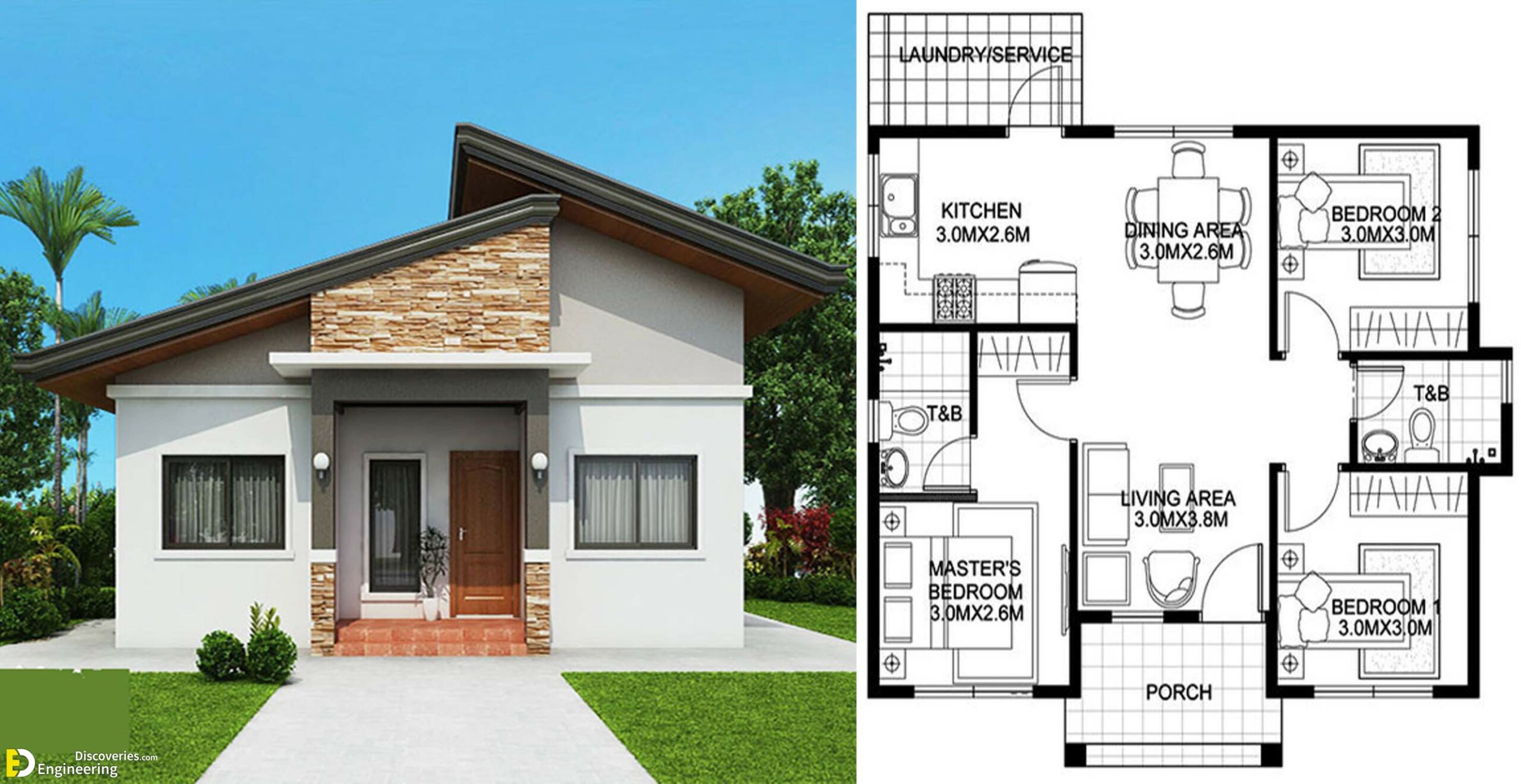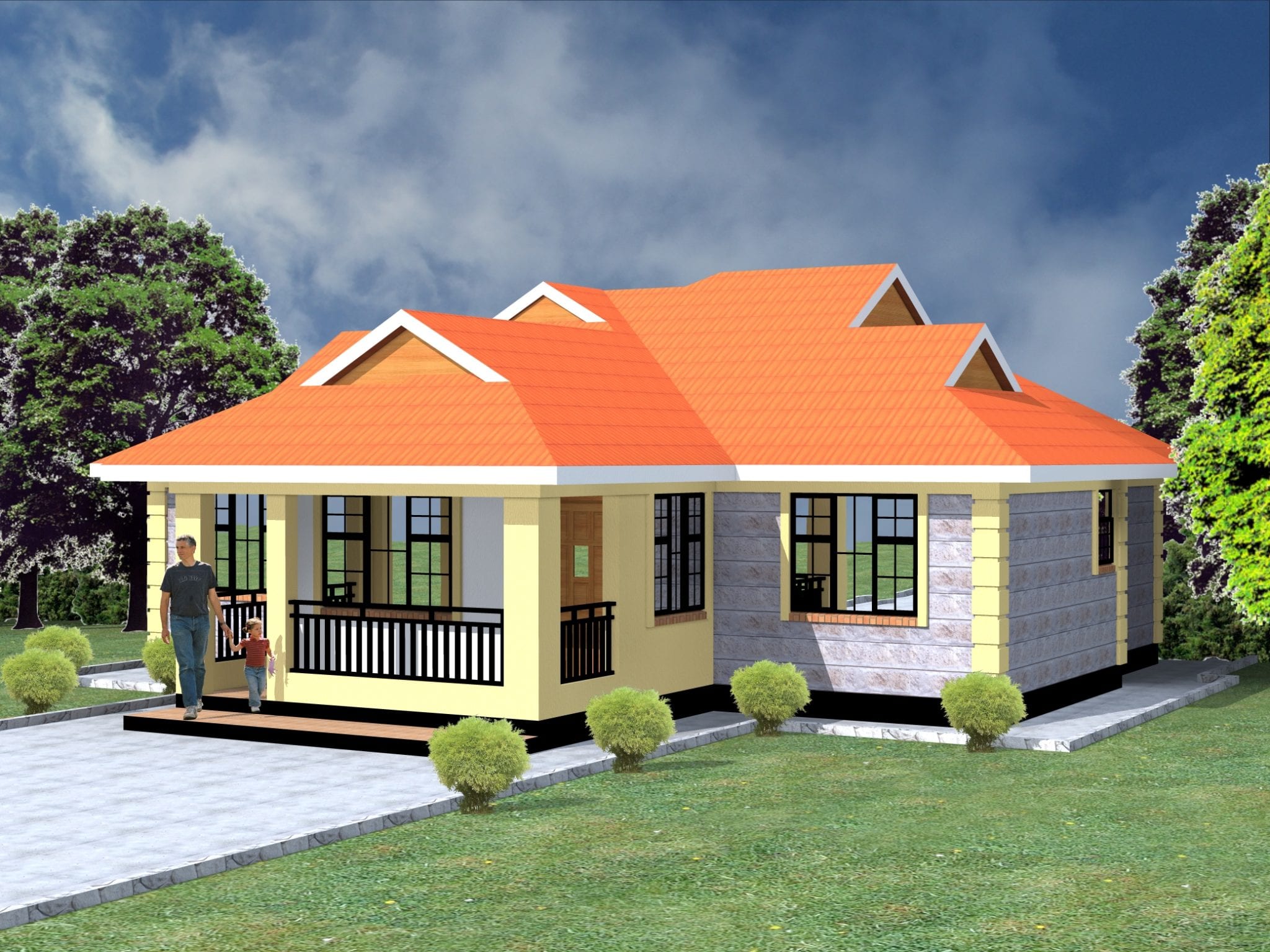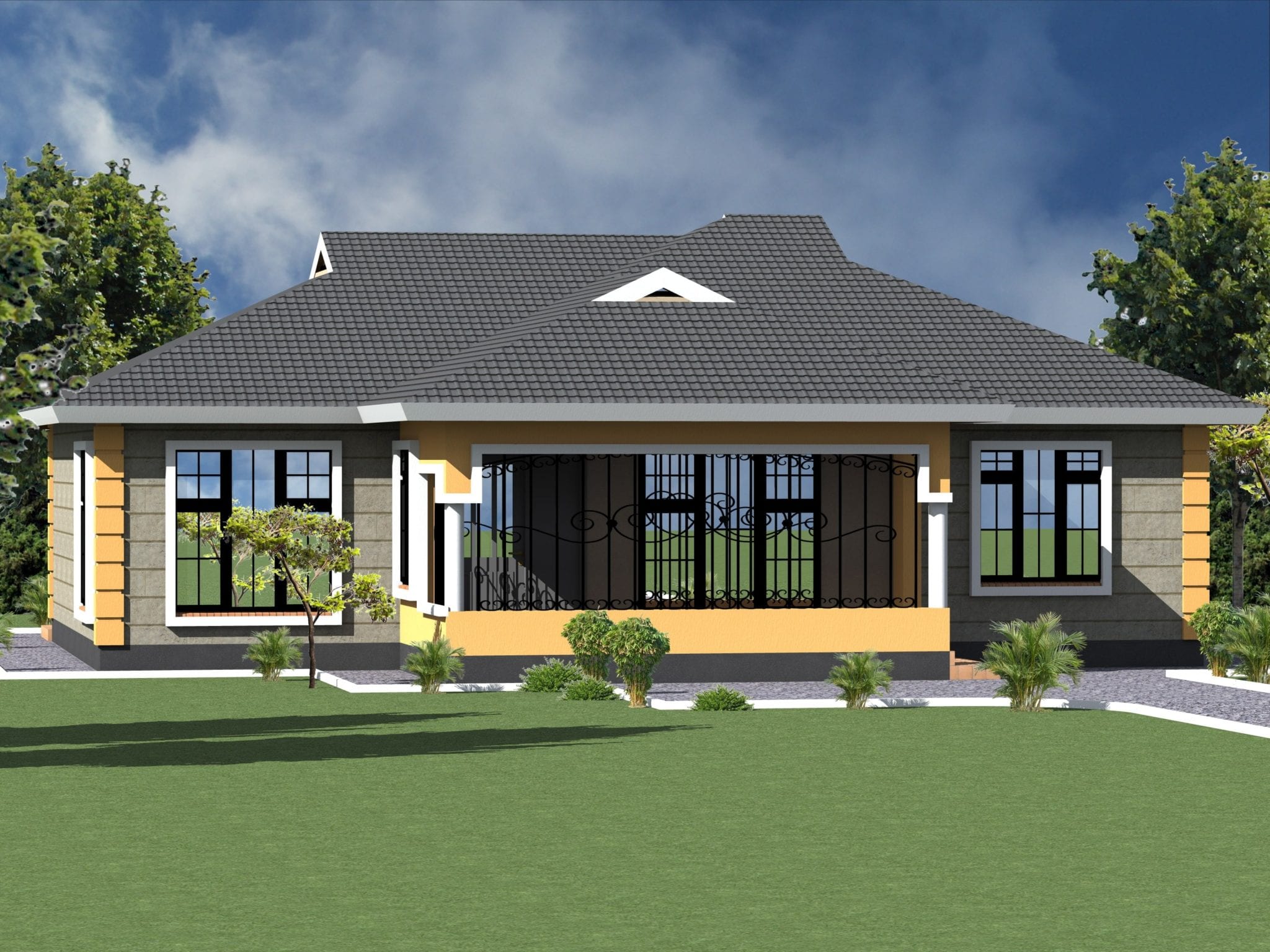Understanding Three Bedroom Bungalow House Plans

Bungalows, known for their single-story design, offer a unique blend of functionality and charm. Three-bedroom bungalow house plans are particularly popular, catering to families and individuals seeking a comfortable and manageable living space. Understanding the key features, layout variations, and advantages and disadvantages of this design is crucial for making informed decisions.
Key Features and Characteristics
Bungalow house plans are characterized by their single-story layout, typically featuring a low-pitched roof and a wide front porch. This design emphasizes open floor plans, with a focus on connecting living areas. Three-bedroom bungalows often include a central living room, a kitchen with a dining area, and three bedrooms with varying sizes and configurations. Some plans may incorporate additional features like a den, a sunroom, or a basement.
Common Layout Variations
There are various layout variations within the three-bedroom bungalow category, offering flexibility to suit different lifestyles and preferences.
- Open Concept Layout: This layout emphasizes seamless flow between the living room, dining area, and kitchen, creating a spacious and airy feel. It’s ideal for families who enjoy entertaining and spending time together.
- Split Bedroom Design: This layout places the master bedroom on one side of the house and the other two bedrooms on the opposite side, offering privacy and separation. This design is particularly suitable for families with teenagers or guests.
- L-Shaped Layout: This layout features a distinct “L” shape, creating separate zones for different activities. It’s often used to create a private area for the master bedroom or to incorporate a den or study.
Advantages of Three-Bedroom Bungalow House Plans
- Accessibility: The single-story design eliminates stairs, making it accessible for people of all ages and abilities. This is particularly important for families with young children, elderly individuals, or those with mobility issues.
- Ease of Maintenance: Bungalows are generally easier to maintain than multi-story homes, as there are fewer areas to clean and less space to heat or cool. This can be a significant advantage for busy families or individuals who prefer a low-maintenance lifestyle.
- Energy Efficiency: The compact design of a bungalow often results in lower heating and cooling costs. This is because there is less surface area to heat or cool, leading to reduced energy consumption.
- Affordability: Bungalows are often more affordable to build than multi-story homes, as they require less materials and labor. This makes them a good option for budget-conscious homebuyers.
Disadvantages of Three-Bedroom Bungalow House Plans, Three bedroom bungalow house plans
- Limited Space: The single-story design can limit the overall square footage, which may be a concern for larger families or those who require more living space.
- Lack of Privacy: The open floor plan can sometimes make it difficult to find private spaces within the home, especially for families with teenagers or guests.
- Limited Storage: Bungalows often have less storage space than multi-story homes, as there are no upper floors or basements. This can be a challenge for families with a lot of belongings.
Exploring Design Considerations

Maximizing space utilization in a three-bedroom bungalow is crucial to ensure a comfortable and functional living environment. Bungalows, known for their single-story design, often present unique challenges in optimizing space. This section will explore design considerations for maximizing space utilization, incorporating storage and functionality, and the importance of natural light and ventilation.
Space Utilization Strategies
Effective space utilization is paramount in a three-bedroom bungalow. To achieve this, consider incorporating the following design elements:
- Open Floor Plans: Open floor plans seamlessly connect living, dining, and kitchen areas, creating a sense of spaciousness and flow. This design eliminates unnecessary walls, maximizing usable area and allowing natural light to circulate freely. Open floor plans are especially beneficial in smaller bungalows, where space is at a premium.
- Multi-Functional Spaces: Multi-functional spaces are essential for maximizing space utilization. For example, a home office can double as a guest room, or a den can serve as a playroom for children. This approach allows flexibility and adaptability to changing needs.
- Built-in Storage Solutions: Built-in storage solutions, such as custom cabinets, shelves, and drawers, efficiently utilize vertical space. This approach eliminates the need for bulky furniture and provides dedicated storage for various items, minimizing clutter and maximizing space.
Incorporating Storage and Functionality
Creative design solutions play a vital role in incorporating storage and functionality into a three-bedroom bungalow. Here are some examples:
- Under-Stair Storage: The space under the stairs is often underutilized. This area can be transformed into a functional storage solution for items like cleaning supplies, tools, or seasonal decorations. Custom-built cabinets or shelves can be installed to maximize the space and keep items organized.
- Murphy Beds: Murphy beds, also known as wall beds, are a space-saving solution for guest rooms or home offices. These beds fold away into a cabinet when not in use, maximizing floor space for other activities. Murphy beds can be customized to match the style of the bungalow, seamlessly integrating into the design.
- Built-in Seating with Storage: Built-in seating with storage provides a comfortable place to relax while offering additional storage for books, blankets, or other items. This design is ideal for living rooms or bedrooms, maximizing space and functionality.
Natural Light and Ventilation
Natural light and ventilation are crucial elements in a bungalow house plan. They enhance the overall ambiance and contribute to a healthier living environment.
- Large Windows: Large windows allow ample natural light to penetrate the interior, creating a bright and airy atmosphere. Strategic placement of windows ensures optimal light distribution throughout the house. Consider using energy-efficient windows to minimize heat loss during colder months.
- Skylights: Skylights provide additional natural light, especially in areas with limited window space. They can create a dramatic effect, illuminating rooms with a soft, diffused light. Skylights can also help reduce energy consumption by minimizing the need for artificial lighting during daylight hours.
- Cross Ventilation: Cross ventilation is essential for maintaining a comfortable indoor temperature and improving air circulation. This is achieved by strategically placing windows on opposite sides of the house, allowing air to flow freely. Cross ventilation can also help to reduce the reliance on air conditioning, saving energy and costs.
Inspiration and Resources

Finding the perfect bungalow house plan can be an exciting and fulfilling journey. This section will explore a curated collection of three-bedroom bungalow house plans from various architectural styles, provide a table showcasing key features and dimensions of different bungalow plans, and offer a list of resources for homeowners seeking inspiration and guidance.
Curated Collection of Bungalow House Plans
A wide range of bungalow house plans caters to diverse preferences and lifestyles. Here are some examples:
- Traditional Bungalow: Characterized by low-pitched roofs, wide eaves, and a front porch. The design often features a simple, rectangular footprint and a symmetrical facade. A classic example is the Craftsman bungalow, known for its exposed beams, built-in cabinetry, and natural materials.
- Modern Bungalow: This style embraces contemporary design elements, featuring clean lines, open floor plans, and large windows that bring in natural light. Modern bungalows often incorporate sustainable materials and energy-efficient features.
- Mediterranean Bungalow: Inspired by the architecture of the Mediterranean region, these bungalows showcase stucco walls, terracotta tile roofs, and arched doorways. They often feature courtyards or patios that provide outdoor living spaces.
- Farmhouse Bungalow: Combining the charm of a traditional bungalow with the rustic appeal of a farmhouse, these plans feature a simple, functional design with an emphasis on natural materials and outdoor living spaces. They often include large porches, open floor plans, and a connection to the surrounding landscape.
Key Features and Dimensions
The following table provides a comparative overview of different bungalow house plans, highlighting key features and dimensions:
| Plan Name | Style | Square Footage | Bedrooms | Bathrooms | Garage |
|---|---|---|---|---|---|
| The Willow Creek | Traditional | 1,800 sq ft | 3 | 2 | 2-car |
| The Sunstone | Modern | 2,100 sq ft | 3 | 2.5 | 2-car |
| The Casita | Mediterranean | 1,650 sq ft | 3 | 2 | 1-car |
| The Homestead | Farmhouse | 2,000 sq ft | 3 | 2.5 | 2-car |
Resources for Inspiration and Guidance
For homeowners seeking inspiration and guidance on bungalow house plans, several resources are available:
- Architectural Design Firms: These firms offer a range of services, from initial concept design to construction drawings and specifications. They can provide personalized design solutions that meet specific needs and preferences.
- Online House Plan Websites: Numerous websites offer a wide selection of bungalow house plans, allowing homeowners to browse and filter options based on their criteria. Many websites provide downloadable floor plans and specifications.
- Home Design Magazines and Books: These publications offer inspiration and insights into various architectural styles, including bungalow designs. They often feature articles on home design trends, building materials, and landscaping ideas.
- Home Shows and Building Events: These events provide opportunities to meet with architects, builders, and designers, learn about the latest trends in home design, and explore a variety of bungalow house plans.
Three bedroom bungalow house plans are a great choice for families who want a cozy and efficient home. You can find plans with a variety of features, from open floor plans to traditional layouts. But what if you need more space?
If you’re thinking about a larger home, you might want to check out how many pods for a 4 bedroom house. While bungalow plans are known for their single-story design, there are ways to expand to accommodate a growing family, and a four-bedroom house could be a great option for you.
Three-bedroom bungalow house plans are popular for their cozy charm and efficient layout. But, if you’re thinking about a smaller space, you might wonder if a 2-bedroom house is a bad investment, especially in a market where larger homes are in demand.
This article dives into the pros and cons of smaller homes. Ultimately, the best choice depends on your individual needs and lifestyle. Three-bedroom bungalows offer ample space for families, while two-bedroom homes can be perfect for smaller households or those looking to downsize.